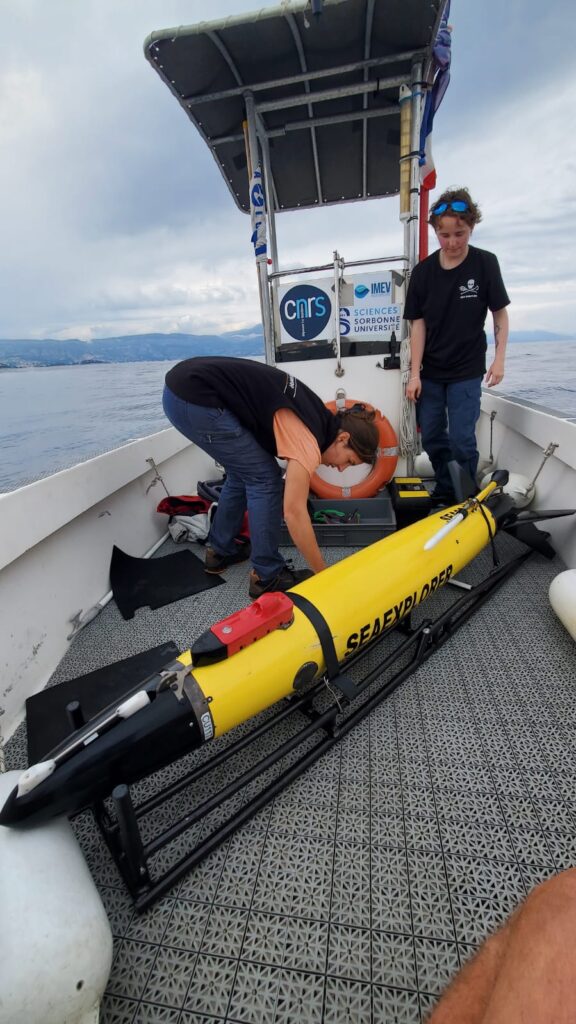Observation & observation strategies
WP1 – Mesoscale circulation
The objective of SNO MOOSE’s physical part is to monitor the long-term evolution of water masses and exchanges from the coast to the open-ocean induced by hydrodynamic instabilities and eddy-induced circulations at mesoscale, which have a major impact on biogeochemistry and biology. Hydrographic data (or CTD) over the entire water column from the annual MOOSE-GE campaign and monthly stations (ANTARES, DYFAMED, MOLA) enable monitoring of surface masses (Atlantic Water), intermediate masses (“Levantine Intermediate Waters”, originating in the Eastern Mediterranean) and deep water masses (“Western Mediterranean Deep Waters”, transformed during episodes of deep convection during wintertime).
To understand these evolutions, high-frequency measurements (autonomous oceanic gliders, profiling floats and fixed moorings) are used to characterize the seasonal deepening of the mixed layer during deep convection episodes in winter, as well as the export, at the level of canyons along the slope, of dense waters that can form on the Gulf of Lion shelf. High-frequency monitoring of temperatures from 0 to 200m on ODAS Météo-France weather buoys (LION and AZUR) also enables us to characterize the intensity of summer marine heatwaves, which seems to be becoming increasingly pronounced. Finally, MOOSE is deploying high spatial resolution measurement systems (gliders, HF radar) to characterize the (sub)mesoscale circulation of the Northern Current flowing along the continental slope between the Ligurian and Balearic Seas.
